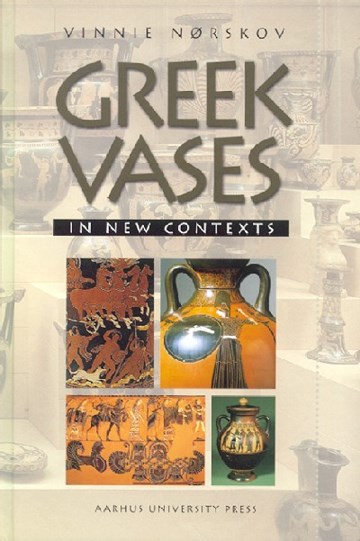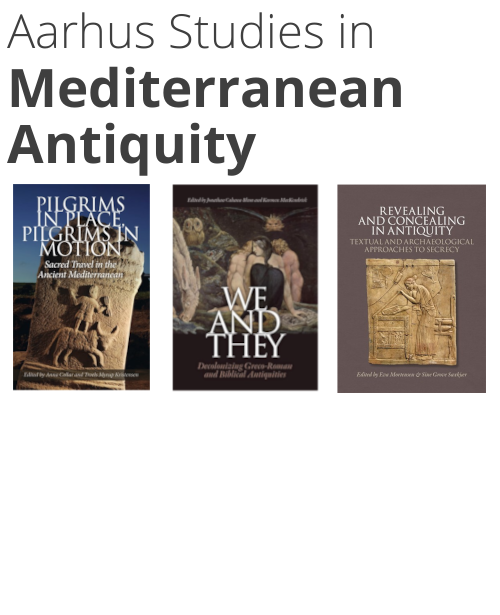
Greek Vases in New Contexts
The Collecting and Trading of Greek Vases - An Aspect of the Modern Reception of Antiquity
A part of the subject area Classical studies
More about the book
About the book
Ever since 1764, when Johan Winckelmann compared the drawings on them to the work of Renaissance masters, ancient Greek vases have been among antiquity's most widely collected artefacts. But while recent scholarly interest in the nature of collecting has inspired several studies of individual 18th century vase collections, a broad survey of contemporary activity has been lacking.
This volume examines the developments in Greek vase collecting and trading since World War II. The author employs two approaches to her subject: case studies of eight major museum collections, and analysis of auction catalogues and dealer publications listing 18,000 Greek vases between 1954 and 1998.
A detailed historical narrative, beginning with the early Renaissance, provides a helpful introduction to the field. Several noteworthy trends emerge. At the beginning of the collecting up until the postwar period, excavations and what they offered the market played the dominant role in the collecting of ancient vases, but in the last 50 years curators, and what they choose to purchase and display, have come to the forefront.
A major scholarly shift in the 1960s increased the gap between the collections of museums, which adopted the new contextual approach, and those of private individuals, who still favour an aestetic approach.
The growing curatorial emphasis on context also lent weight to emerging ethical concerns, as the relation between non-provenanced objects and the destruction of archaeological sites became an international issue. Connoisseurs, curators and archaeologists will all find much intriguing material here, as will scholars in the fields of collecting and museum studies."
In Appendix B (p. 353), the total number of each type of vase is erroneous. Errata may be obtained from the Aarhus University Press.
"In addition to her examination of eight specific collections and their development since World War II, Nørskov's book provides a useful survey of the history of collecting Greek vases from the Renaissance ... to the 18th century ... To back up her findings, Nørskov's attractively produced book has an extensive apparatus of color diagrams, charts, and three appendices, which record interviews with museum curators, annual listings of vases by type on the art market from 1954 to 1998 and the 172 most expensive vases sold at auction between 1969 and 2000."
Jenifer Neils in Art Bulletin
Table of contents
Chapter 1. Introduction:
The sources and the state of scholarship
Chapter 2. The History of Collecting Greek Vases:
The beginning of a tradition
Hetruscan vases
Winckelmann & Hamilton - a change in tradition
The idea and appearance of vase collections
Vulci and the golden age of collecting vases
The development of archaeology and its impact on vase collections
America appears on the vase-collecting scene
The century of attribution
Modern scholarship: tradition and changes
Chapter 3. Vases for Sale: Trade & Restrictions:
The rise of the market
The dispersion of the finds from Vulci
Rome: an Eldorado for antiquarians
The impact of connoisseurship
Greece and the eastern Mediterranean
Internationalisation, laws, and ethics
Chapter 4. Vases in Museums: Case Studies:
The range of collections
The British Museum in London: the first vase collection
The National Museum in Copenhagen: royal roots
The Metropolitan Museum of Art: America on line
Ny Carlsberg Glyptotek: industrial princes
Antikenmuseum Basel und Sammlung Ludwig: new museums
Ashmolean Museum of Art and Archaeology: university collections
Antikensammlung Kiel: the German university collection
The Duke Classical Collection: new study collections
Some preliminary conclusions
Chapter 5. A Look at the Market: Availability or Choice:
The antiquities market in the post-war era
Vases for sale: a survey of the supply
Private collections for sale
Minerva's market: the 1990s from a dealer's point of view
Availability or choice
Chapter 6. Conclusions: The Individual Choice:
A living tradition
The curator's choice
The collector's choice: 'The most intriguing aspect ...'
Contextual archaeology, ethics, and the consequences of collecting
The exhibited vase
Approaching the 21st century
Appendixes:
Appendix A: Interviews with museum curators
Appendix B: Vases on the market
Appendix C: Table of 172 vases sold at auction
Bibliography:
Abbreviations
Bibliography
Auction and gallery catalogues
List of Illustrations
Indices
Index of names
Index of museums and collections
Index of galleries and auction houses
Index of laws and institutions
Index of vase painters and potters
Press reviews
Geralda Jurriaans Helle, Besprechungen, Nachleben und Wissenschaftgeschichte
"This book is a highly interesting study and should be read by anyone dealing with collecting Greek vases, private collectors and especially museum curators."
"For museum curators it is enlightening to compare the history of their own museum with the general tendencies described in this book."




